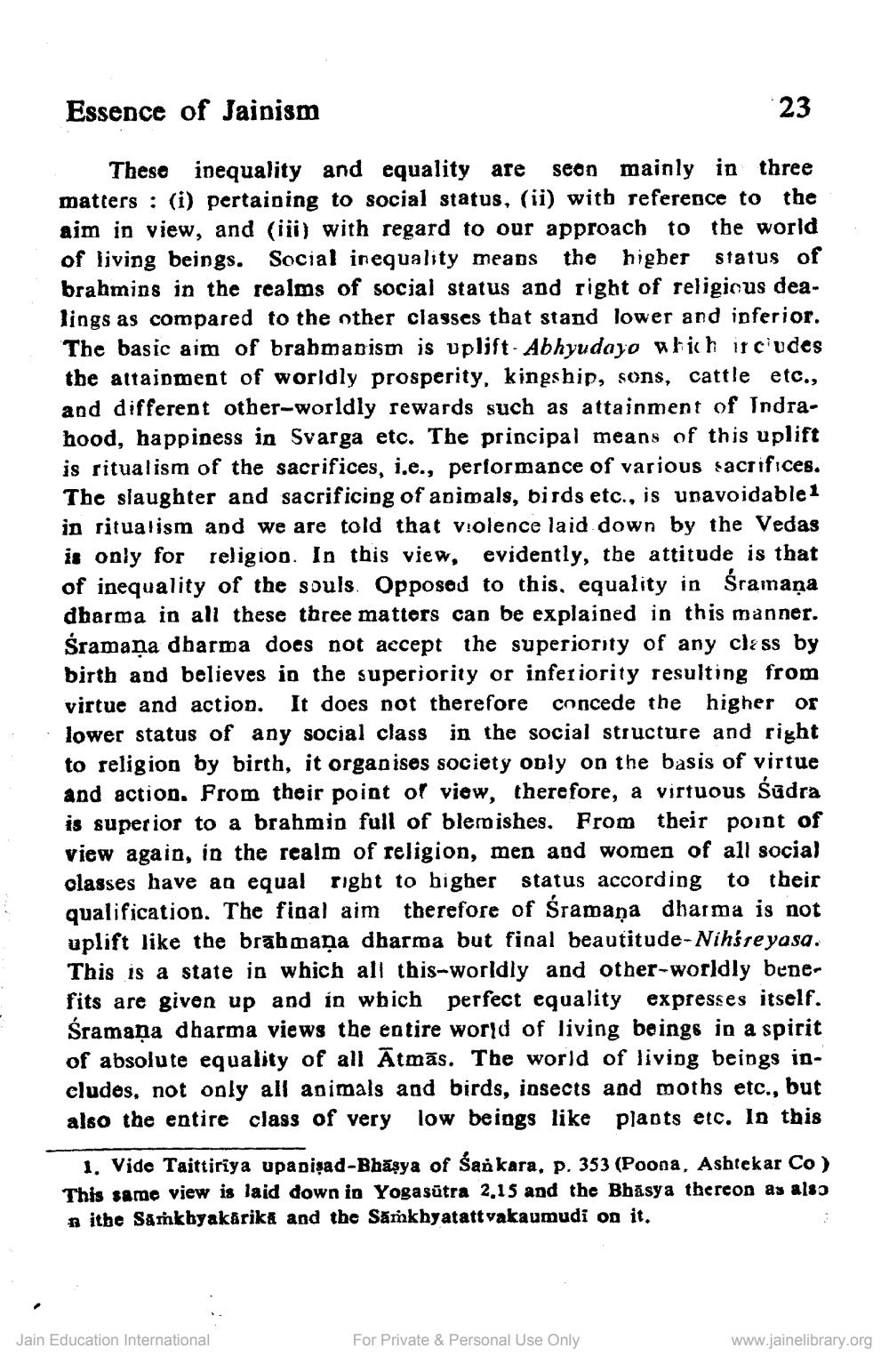________________
Essence of Jainism
23
These inequality and equality are seon mainly in three matters : (i) pertaining to social status, (ii) with reference to the aim in view, and (iii) with regard to our approach to the world of living beings. Social inequality means the higher status of brahmins in the realms of social status and right of religious dealings as compared to the other classes that stand lower and inferior. The basic aim of brahmapism is uplift. Abhyudayo which includes the attainment of worldly prosperity, kingship, sons, cattle etc., and different other-worldly rewards such as attainment of Indrahood, happiness in Svarga etc. The principal means of this uplift is ritualism of the sacrifices, i.e., performance of various sacrifices. The slaughter and sacrificing of animals, birds etc., is unavoidable1 in ritualism and we are told that violence laid down by the Vedas is only for religion. In this view, evidently, the attitude is that of inequality of the souls. Opposed to this, equality in Šramaņa dharma in all these three matters can be explained in this manner. Šramaņa dharma does not accept the superiority of any class by birth and believes in the superiority or inferiority resulting from virtue and action. It does not therefore concede the higher or lower status of any social class in the social structure and right to religion by birth, it organises society only on the basis of virtue and action. From their point of view, therefore, a virtuous sūdra is superior to a brahmin full of bleroishes. From their point of view again, in the realm of religion, men and women of all socia) classes have an equal right to bigher status according to their qualification. The final aim therefore of Sramana dharma is not uplift like the brabmaņa dharma but final beautitude-Nihśre yasa. This is a state in which all this-worldly and other-worldly benefits are given up and in which perfect equality expresses itself. Śramaņa dharma views the entire world of living beings in a spirit of absolute equality of all Ātmās. The world of living beings includes, not only all animals and birds, insects and moths etc., but also the entire class of very low beings like plants etc. In this
1. Vide Taittiriya upadişad-Bhāşya of Sankara, p. 353 (Poona, Ashtekar Co) This same view is laid down in Yogasūtra 2.15 and the Bhasya thereon as also a ithe Sankhyakärika and the Samkhyatattvakaumudi on it.
Jain Education International
For Private & Personal Use Only
www.jainelibrary.org




